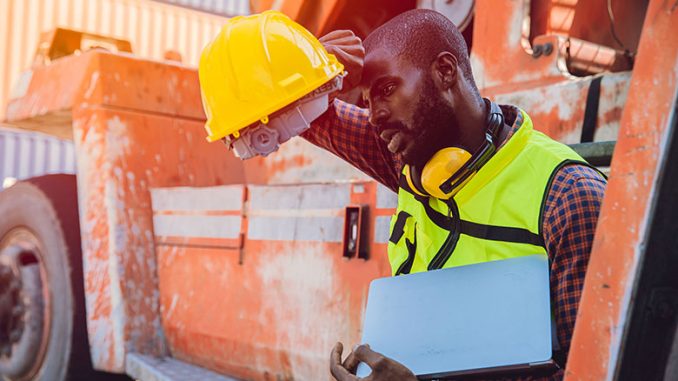
Outdoor work, particularly construction during the summer months, is liable to carry a substantial health risk.
These aren’t just a question of convenience for contractors, they can also be dangerous and sometimes even fatal. Here’s how the construction industry is now laboring to try and keep people who work outdoors protected from heat stress–which might lead to personal injury. Today’s best strategies for contractors to escape being borne away in the heat are: Wearable Technology
Smart Embedding
Stepping up work on devices for monitoring and management of heat stress, we’re now finding ways to incorporate sensors into modern vests and helmets. Such gadgets provide real-time data on temperature, humidity and heart rate. When levels get to be dangerous they sound the alarm, giving both workers and on-site supervisors adequate time to rest or drink some water. For example, smart cooling vests utilized phase-changing materials or cooling systems that were active in order to regulate body temperature–resulting in less perspiration while heat-related risks stayed low.
Mobile Vitals
Mobile applications that provide assistance in the management of heat stress are a growing fixture on smartphones. Those who use these apps get hydration reminders as well as warnings based on real-time heat index data, and even custom risk assessments for themselves made out of weather patterns along with personal health data. A few such items come complete with helpful information about the symptoms of stroke or how to prevent it. By incorporating such components for every-day usage, contractors take even more steps toward preparing their responses to instances of heat stress.
Technological Breakthroughs
Rapid development of relatively advanced cooling systems for working at construction sites appears attractive. Both portable Air Conditioners and Evaporative Cooling Units are posted in convinced corners of workplaces to air another sweltering day away. Besides, people are now proposing misting systems, cooling tunnels and other such facilities that provide localized cooling for workers. These improved working conditions thus prevent heatstroke and increase productivity.
Heat-Resistant Materials and Clothing
Whole work clothing and gear are completely different after new heat-resistant materials appeared. Today, modern work clothes fabrics are predominantly for comfort. They are woven with better ventreness to get rid of absorbed sweat and make the worker feel some cooling down. Innovations such as reflective materials and hi-tech fabrics that protect against ultra violet rays also help to darken his skin color, reducing the level of absorbed heat while enhancing safety all round.
Heat Stress Training and Awareness Programs
Information is a man’s best weapon for every kind of heat-induced illness. Training programs to develop skills in recognizing the life-threatening symptoms of heat stress, completing measures to avoid it and the importance of drinking water are obligatory. However, these programs must also adopt the techniques of virtual reality simulations and interactive modules to enable those being trained to fully understand what the problem is and what methods ease heat stress.
Adjusting Work Schedules
By setting work hours to avoid the hottest times of day, or even night, you can prevent heat stress. Already many construction companies have changed starting times and work schedules in order to reduce the number of hours their construction workers have to spend in extreme climatic conditions. Not only is this a good way of coping with heat stress, but it also serves to raise productivity while instilling in human beings again as another aspect of nature
On-Site Hydration Stations,
It is important to make certain that drinkable water and electrolytes are on hand for workers at all times in order to avoid heat illness. Coolers, water coolers, electrolyte drinks, and more all can be found at on-site hydration stations. By taking a break and having a drink, you can avoid all day health and performance of the workers little by little.
Conclusion
Meanwhile, innovative technology and design in the construction industry also reduce to a certain extent the hazardous condition of working at high temperatures. The shift in direction of such wearable technologies and cooling systems is essential for creating better working environments Construction The incumbent Integrated environmental technology is a basic characteristic of any solution in this field and that fact continues to lend the successful manufacturers their competitive advantage. Soldiering out of finish lines As weather patterns go further great efforts need to be made in primary areas, such as keeping up with construction solutions that give people jobs uo there between paper and pen as well.”